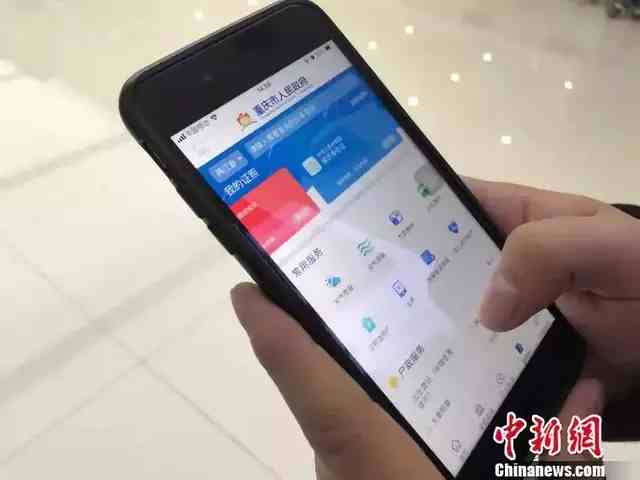

China’s online government administration platforms have flourished, providing more convenient services for companies and individuals.

A citizens uses an government service app to search for information in Chongqing. (Photo/Chinanews.com)
According to statistics, the number of users of online government services in the country hit 694 million as of March, up 76.3 percent from the figure at the end of 2018. The users account for 76.8 percent of the number of internet users in China.
While local governments have advanced the transformation of online services, 29 provincial governments have set up special “sections” on their online government service platforms to provide better services to meet the needs of the public more efficiently.
South China’s Guangdong province has set a great example in this regard. Relying on its integrated online government service platform, the province has provided online services for enterprises during the period of COVID-19 epidemic control, facilitating work and production resumption, and invigorating the market.
“I stayed at home and got things done. Now electronic certificates, seals and signatures are all that I think about,” said Jiang Weikai, an executive of Guangzhou Haoyang Electronic Co., Ltd., a lighting equipment producer in the southern coastal province’s capital city Guangzhou. Jiang benefited from the contactless government services during the period of the outbreak.
So far, Guangdong has published 2,106 items of government services that individuals and businesses can access without providing certificates, according to Gao Shangsheng, deputy head of the Guangdong Government Service Data Management Bureau.
Guangdong also launched a WeChat mini program called Yueshitong, roughly translated in English to “saving the trouble in Guangdong” for the construction of digital government.
When Wang Jun from northeast China had a dispute with his employer over compensation, he sent an application to the program for labor mediation to solve the problem. A mediator immediately communicated with his employer, and Wang received the compensation on the third day upon his application.
According to Gao, the program has handled over 900 million cases since its launch. At present, on average, half of the residents in the province have used the program to access government services.
The program has provided 1,195 items of government services, including 988 ones that allow people to complete tasks without going to government offices, and 105 items residents can handle without the need for a second visit.
The province has also ensured information sharing and connectivity among departments at different levels to remove “isolated islands of information.”
 Fire brigade in Shanghai holds group wedding
Fire brigade in Shanghai holds group wedding Tourists enjoy ice sculptures in Datan Town, north China
Tourists enjoy ice sculptures in Datan Town, north China Sunset scenery of Dayan Pagoda in Xi'an
Sunset scenery of Dayan Pagoda in Xi'an Tourists have fun at scenic spot in Nanlong Town, NW China
Tourists have fun at scenic spot in Nanlong Town, NW China Harbin attracts tourists by making best use of ice in winter
Harbin attracts tourists by making best use of ice in winter In pics: FIS Alpine Ski Women's World Cup Slalom
In pics: FIS Alpine Ski Women's World Cup Slalom Black-necked cranes rest at reservoir in Lhunzhub County, Lhasa
Black-necked cranes rest at reservoir in Lhunzhub County, Lhasa China's FAST telescope will be available to foreign scientists in April
China's FAST telescope will be available to foreign scientists in April "She power" plays indispensable role in poverty alleviation
"She power" plays indispensable role in poverty alleviation Top 10 world news events of People's Daily in 2020
Top 10 world news events of People's Daily in 2020 Top 10 China news events of People's Daily in 2020
Top 10 China news events of People's Daily in 2020 Top 10 media buzzwords of 2020
Top 10 media buzzwords of 2020 Year-ender:10 major tourism stories of 2020
Year-ender:10 major tourism stories of 2020 No interference in Venezuelan issues
No interference in Venezuelan issues
 Biz prepares for trade spat
Biz prepares for trade spat
 Broadcasting Continent
Broadcasting Continent Australia wins Chinese CEOs as US loses
Australia wins Chinese CEOs as US loses